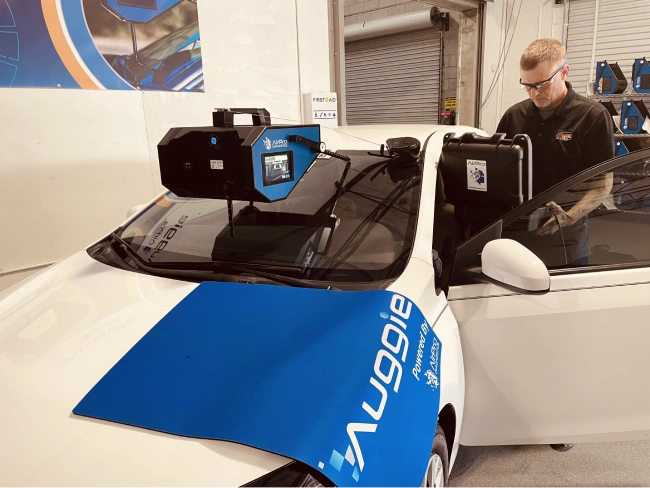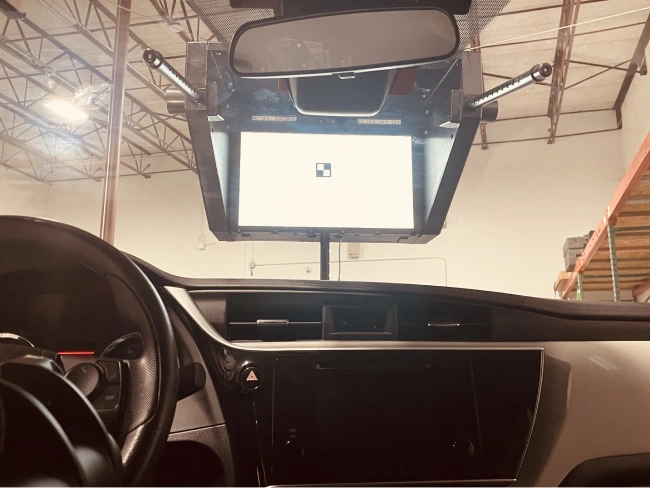Understanding ADAS: Advanced Driver Assistance Systems (ADAS) are sophisticated systems that utilize electronic technologies to aid drivers. These systems encompass a variety of features designed to improve safety, convenience, and driving efficiency.
Components of ADAS: ADAS includes features like adaptive cruise control, lane-keeping assistance, automatic emergency braking, and blind-spot detection. These systems rely heavily on sensors and cameras, many of which are integrated into the vehicle’s windshield.
Windshield’s Role in ADAS: The windshield serves as a platform for mounting ADAS sensors and cameras. Thus, its condition and alignment are crucial for the accurate functioning of these systems.





Need for Recalibration: Following windshield service, recalibration of ADAS is essential to correct any misalignments that can occur during windshield replacement or repair. This recalibration ensures the sensors and cameras are correctly oriented to provide accurate data.
Safety Consequences: Incorrectly calibrated ADAS can lead to malfunctioning of critical safety features, potentially putting the driver and passengers at risk.
Recalibration in Motion: Dynamic recalibration involves adjusting the ADAS while the vehicle is driven under specific operational conditions. This process uses specialized diagnostic tools to recalibrate the system in real time.
When Dynamic Recalibration is Needed: This method is generally used for vehicles where the ADAS can recalibrate with the car in motion, ensuring the system’s functionality in real-world driving scenarios.
Recalibration Process: The process involves using fixed calibration targets and patterns to align Advanced Driver Assistance Systems (ADAS) sensors and cameras accurately.
Suitability of Static Recalibration: Required for vehicles with complex ADAS configurations that demand precise and stationary calibration for optimal accuracy.


Recalibration after windshield replacement or significant repairs is crucial to realign ADAS components. This ensures the cameras and sensors are positioned accurately and functioning optimally.
Failing to recalibrate can result in ADAS providing false information, leading to reduced effectiveness and potentially hazardous driving situations.
The duration and cost of ADAS recalibration vary, depending on the vehicle model and type of recalibration. We provide tailored estimates based on specific vehicle needs.
Typically, recalibration is recommended following a windshield replacement, after certain types of collisions, or if ADAS issues are detected.

(866) 975-4527